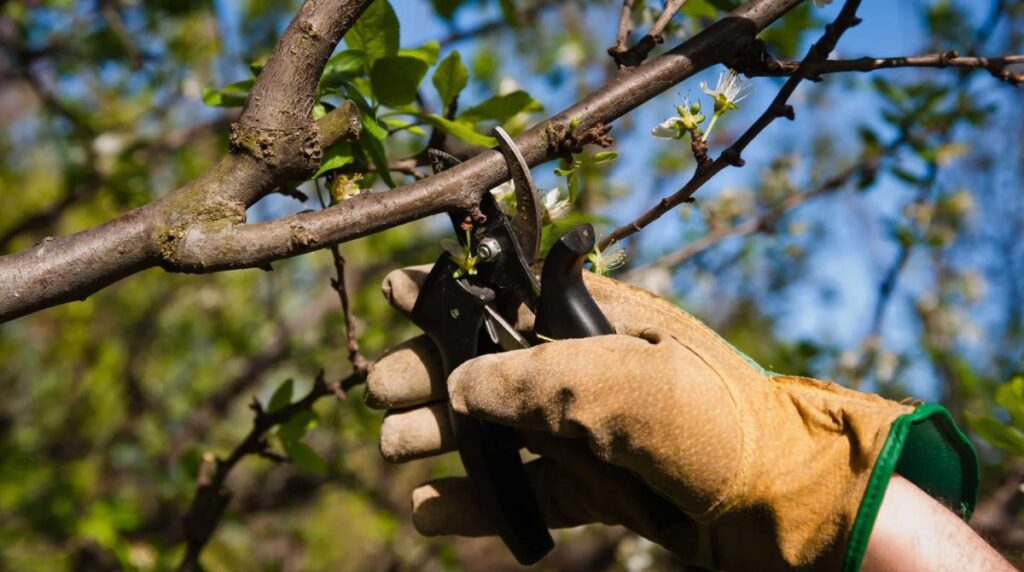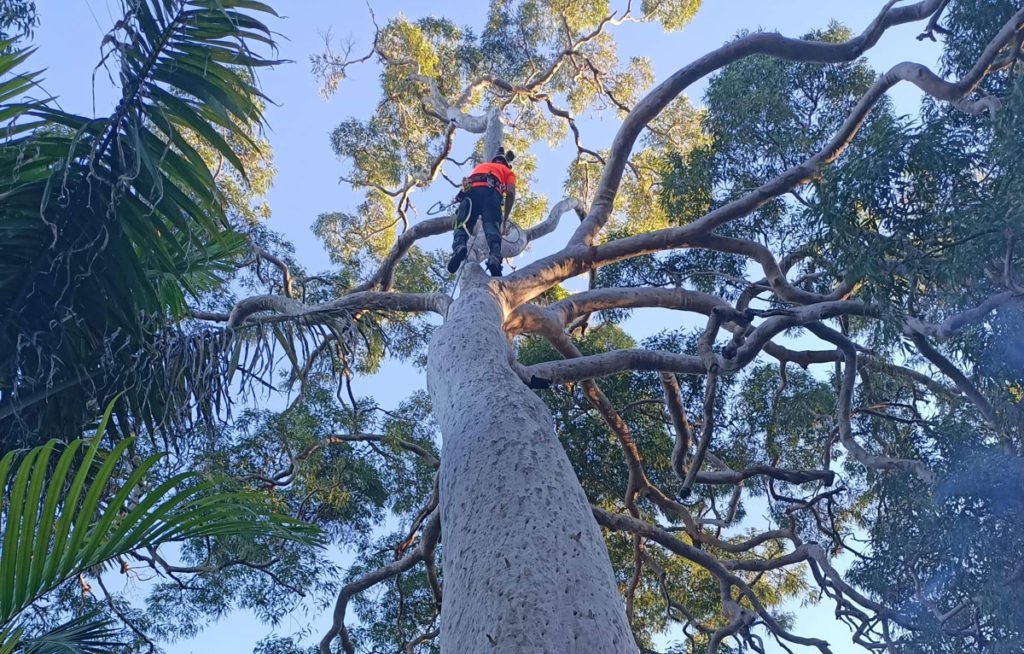
Maximizing Tree Health with Expert Tree Pruning Services in Sydney
Trees are an essential part of our ecosystem, providing numerous benefits such as shade, improving air quality, and enhancing the beauty of our surroundings. However, just like any living organism, trees require care and maintenance to thrive and remain healthy. One crucial aspect of tree care is proper pruning, which plays a significant role in maximizing tree health. In Sydney, residents can rely on expert tree pruning services to ensure their trees receive the care they need.
Understanding the Importance of Tree Pruning
Tree pruning is a vital practice that involves selectively removing branches or parts of a tree to improve its overall health and appearance. When done correctly, pruning offers a range of benefits and can significantly contribute to the long-term well-being of trees.
Tree pruning sydney is not just about cutting branches haphazardly; it is a delicate process that requires expertise and precision. Professional tree pruners understand the biology of trees and how they respond to different pruning techniques. By hiring experts in Sydney, you can ensure that your trees receive the care they deserve, promoting healthy growth and longevity.
Tree pruning is a delicate art that requires knowledge of tree biology and proper pruning techniques. It is essential to understand the tree species being pruned, as different trees have unique growth habits and responses to pruning. For example, some trees may require minimal pruning to thrive, while others benefit from more aggressive pruning to shape their growth effectively.
The Role of Pruning in Tree Health
Pruning plays a crucial role in maintaining the overall health of trees. By removing dead or diseased branches, pruning helps prevent the spread of diseases and infestations that could harm the entire tree. It also promotes better air circulation and sunlight penetration, which are essential for photosynthesis and the tree’s overall growth.
Additionally, proper pruning techniques involve making clean cuts at the correct angle to minimize damage to the tree and promote efficient healing. Improper pruning cuts can leave the tree vulnerable to pests and diseases, emphasizing the importance of hiring trained professionals for complex pruning tasks. Learn more about pests at https://smfarm.cfans.umn.edu/pests-and-diseases/pests-and-diseases-introduction
Key Benefits of Regular Tree Pruning
Regular tree pruning offers several key advantages. Firstly, it enhances the tree’s structural integrity by removing weak or damaged branches, reducing the risk of accidents during storms or high winds. Pruning also helps maintain a desirable shape and size for the tree, making it more aesthetically pleasing and ensuring it fits well within its surroundings.
Moreover, pruning can stimulate new growth and increase flower or fruit production, benefiting both the tree and the environment. By strategically pruning branches, tree canopy density can be managed to allow more sunlight to reach the lower branches, promoting balanced growth throughout the tree.
Furthermore, regular pruning can help identify and address potential issues early, such as signs of disease or pest infestations. Early intervention through pruning can prevent these problems from escalating and causing significant damage to the tree, ultimately prolonging its lifespan and enhancing its overall health.

Identifying the Right Time for Tree Pruning
While tree pruning is beneficial, it is crucial to identify the appropriate time for this task. Factors such as the specific tree species, weather conditions, and the tree’s current health status should be considered.
Tree pruning is not a one-size-fits-all task; it requires careful consideration and planning to ensure the best results for the tree’s health and aesthetics. Understanding the seasonal considerations for pruning is essential in determining the right time to carry out this important activity.
Seasonal Considerations for Pruning
The timing of pruning can vary depending on the type of tree and the goal of the pruning. In general, pruning during the dormant season (late winter or early spring) is often recommended. This is because it minimizes the stress on the tree and allows for better healing. However, there are exceptions, such as flowering trees, which should be pruned after they bloom.
During the dormant season, trees are not actively growing, making it an ideal time to prune for most tree species. Pruning during this period can also help to shape the tree’s growth and promote a strong structure. However, for certain tree species that are prone to diseases or pests during specific times of the year, adjusting the pruning schedule accordingly is crucial to prevent potential issues.
Signs Your Tree Needs Pruning
There are several signs that indicate a tree may need pruning. These include the presence of dead, diseased, or damaged branches, branches crossing or rubbing against each other, or branches that interfere with structures, power lines, or visibility. Additionally, if a tree has an excessive amount of dense foliage, pruning can help improve airflow and reduce the risk of disease.
Regularly inspecting your trees for these signs and symptoms can help you determine when pruning is necessary to maintain the health and beauty of your landscape. Proper pruning techniques, combined with a good understanding of your tree’s specific needs, can go a long way in ensuring its longevity and vitality.
Expert Tree Pruning Services in Sydney
With the importance of tree pruning established, it is essential to entrust this task to professionals who have the necessary knowledge, skills, and equipment to carry out the job effectively and safely in Sydney.
What to Expect from Professional Pruning Services
When you hire expert tree pruning services in Sydney, you can expect a thorough assessment of your trees’ needs before any pruning takes place. This assessment helps identify the specific requirements of each tree, including its species, age, and overall health condition. Based on this evaluation, a customized pruning plan is created to address the tree’s unique needs.
Professional pruning services also adhere to industry best practices, utilizing techniques that encourage proper wound healing and minimize the risk of infection or damage to the tree. Experienced arborists carefully remove branches with precision, ensuring the longevity and health of the tree.
Moreover, professional tree pruners in Sydney not only focus on the immediate pruning needs but also consider the long-term health and aesthetics of the tree. They provide recommendations for ongoing maintenance and care to keep your trees in top condition throughout the year.
Choosing a Reliable Tree Pruning Service
When selecting a tree pruning service in Sydney, it is crucial to choose a reliable and reputable provider. Look for companies with certified arborists who have extensive experience in tree care and pruning. Additionally, consider reading customer reviews and asking for recommendations to ensure you choose a service that meets your specific requirements.
Remember, proper tree pruning is an investment in the health and beauty of your landscape. By choosing a trustworthy tree pruning service in Sydney, you can enjoy lush, vibrant trees that enhance the overall appeal of your property for years to come.
The Process of Tree Pruning
The process of tree pruning is a delicate art that requires careful planning and execution to achieve the desired outcome while ensuring the tree’s health and vitality are maintained.
Tree pruning is not just about shaping the tree for aesthetic purposes; it is also essential for the tree’s overall well-being. By removing dead or diseased branches, the tree can allocate its resources more efficiently to promote new growth and combat potential diseases. Click here to learn more about potential diseases.
Initial Assessment and Planning
Before any pruning takes place, a thorough assessment of the tree is conducted by certified arborists. This assessment includes evaluating the tree’s current health, identifying any structural weaknesses, and assessing potential risks such as overhanging branches or proximity to power lines. Based on this evaluation, a detailed pruning plan is developed to address the tree’s specific needs while considering factors like seasonal growth patterns and long-term health.
Furthermore, the aesthetic aspect of tree pruning is also taken into consideration during the planning phase. Proper pruning can enhance the tree’s natural shape and beauty, making it an attractive addition to its surroundings.
Execution of Pruning Techniques
With the pruning plan in place, skilled arborists carry out a variety of pruning techniques tailored to the tree’s requirements. These techniques may involve the strategic removal of branches to improve air circulation within the canopy, reduce wind resistance, or shape the tree to fit its environment better. Care is taken to make clean pruning cuts that promote rapid healing and reduce the risk of decay or pest infestation.
It is crucial to note that improper pruning techniques can harm the tree and lead to long-term damage. That is why hiring trained professionals with a deep understanding of tree biology and pruning best practices is essential for the health and longevity of your trees.
Post-Pruning Care for Optimal Tree Health
After pruning, it is essential to provide proper care to help trees recover and maximize their health benefits.
Pruning is a common practice that helps maintain the overall health and appearance of trees. However, the process of pruning can leave trees vulnerable to stress and potential issues if not followed by adequate care. Post-pruning care is crucial in ensuring that trees can recover effectively and continue to thrive in their environment.
Essential Aftercare Tips
One crucial aspect of post-pruning care is regular watering, especially during dry periods, to help the tree recover and promote new growth. Applying a layer of mulch around the base of the tree helps retain moisture and prevents weed growth. Additionally, monitoring the tree for any signs of stress, disease, or pests is essential to address any issues promptly.
Proper aftercare also involves inspecting the pruning cuts to ensure they are healing correctly. Clean cuts promote faster healing and reduce the risk of infections or diseases entering the tree. By following these aftercare tips diligently, tree owners can support their trees in regaining strength and vitality post-pruning.

Monitoring Tree Health Post-Pruning
Keeping a close eye on the tree’s health after pruning is crucial. Regular observation allows you to detect any development of issues or structural concerns and take appropriate action. If you notice any signs of decline or stress, contacting a professional tree care service for further assessment and potential treatments is recommended.
Furthermore, it is essential to consider the seasonal factors that may impact tree recovery post-pruning. Trees pruned in the fall, for example, may have different care requirements compared to those pruned in the spring. Understanding these nuances can help tailor the aftercare approach to suit the tree’s specific needs and optimize its recovery process.
Other resources: How to Find the Best Tree Pruning Near Me


